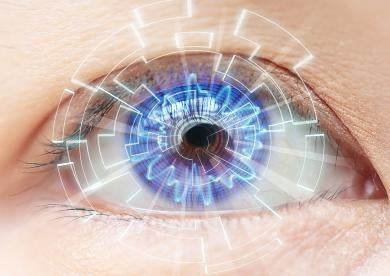We’ve previously written about the National Telecommunications and Information Administration (NTIA) privacy multistakeholder process to address concerns associated with the emerging commercial use of facial recognition technology. Notably, last year, the self-regulatory initiative hit a stumbling block when nine consumer advocacy groups withdrew from the process due to a lack of consensus on a minimum standard of consent. Regardless, the remaining participants continued on and last week, the stakeholders concluded the process and came to a consensus on final privacy guidelines, “Privacy Best Practice Recommendations For Commercial Facial Recognition Use.”
The guidelines generally apply to “covered entities,” or any person, including corporate affiliates, that collects, stores, or processes facial template data. The guidelines do not apply to the use of facial recognition for the purpose of aggregate or non-identifying analysis (e.g., the counting of unique visitors to a particular location), and is not applicable to certain governmental uses of the technology, such as for law enforcement or national security. Moreover, under the guidelines, data that has been “reasonably de-identified” is not facial template data and therefore not covered by the best practices.
The guidelines are generally broken down into several categories:
-
Transparency: Covered entities are encouraged to reasonably disclose to consumers their practices regarding the collection, storage and use of faceprints and update such policies in the event of material changes. Policies should generally describe the foreseeable purposes of data collection, the entity’s data retention and de-identification practices, and whether the entity offers the consumer the ability to review or delete any facial template data. Where facial recognition technology is used at a physical location, the entity is encouraged to provide “concise notice” to consumers of such use.
-
Recommended Practices: Before implementing facial recognition technology, the guidelines suggest that entities consider certain important issues, including:
-
Voluntary or involuntary enrollment
-
Types of other sensitive data being captured and any other risks to the consumer
-
Whether faceprints will be used to determine certain eligibility for or access to certain activities covered under law (e.g., employment, healthcare)
-
Reasonable consumer expectations regarding the use of the data
-
-
Data Sharing: Covered entities that use facial recognition to determine an individual’s identity are encouraged to offer the individual the opportunity to control the sharing of such data with unaffiliated third parties (note: an unaffiliated third party does not include a covered entity’s vendor or supplier that provides a product or service related to the facial template data).
-
Data Security: Reasonable security measures should be used to safeguard collected data, consistent with the operator’s size, the nature and scope of the activities, and the sensitive nature of the data.
-
Redress: Covered entities are encouraged to offer consumers a process to submit concerns over the entity’s use of faceprints.
In the end, the recommendations are merely best practices for the emerging use of facial recognition technology, and they will certainly spark more debate on the issue. Following the release, privacy advocates generally criticized the guidelines and had hoped that stronger notice and consent principles and additional guidance on how to handle certain privacy risks had been part of the final document. It remains to be seen how many of the suggested guidelines will be implemented in practice, and whether consumers themselves will nudge the industry to erect additional privacy controls.
In the meantime, entities must still consider compliance issues surrounding the noteworthy Illinois biometric privacy law (the Biometric Information Privacy Act, or BIPA) enacted in 2008 and now the subject of much recent litigation, including:
-
In re Facebook Biometric Information Privacy Litig., No. 15-03747 (N.D. Cal. Aug 17, 2015))
-
Norberg v. Shutterfly, Inc., No. 15-05351 (N.D. Ill. filed June 17, 2015) (settled in April 2016)
-
Rivera v. Google, Inc., No. 16-02714 (N.D. Ill. filed Mar. 1, 2016)
-
Martinez v. Snapchat, Inc., No. BC621391 (Cal. Super. Ct. filed May 23, 2016).
We will continue to monitor the latest legal and important industry developments relating to biometric privacy.



 i
i


